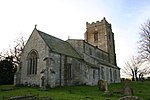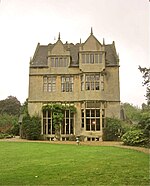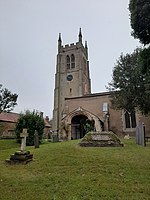Rippingale railway station
Disused railway stations in LincolnshireFormer Great Northern Railway stationsLincolnshire railway station stubsPages with no open date in Infobox stationRailway stations in Great Britain closed in 1930 ... and 2 more
Railway stations in Great Britain opened in 1872Use British English from August 2015

Rippingale railway station was a station serving the villages of Rippingale, Dowsby and Dunsby, Lincolnshire on the Great Northern Railway Bourne and Sleaford railway. It opened in 1872 and closed to passengers in 1930. The section from Bourne through Rippingale to Billingborough remained open for goods until 1964.The station building is now a private residence.
Excerpt from the Wikipedia article Rippingale railway station (License: CC BY-SA 3.0, Authors, Images).Rippingale railway station
Long Drove, South Kesteven Rippingale
Geographical coordinates (GPS) Address Nearby Places Show on map
Geographical coordinates (GPS)
| Latitude | Longitude |
|---|---|
| N 52.83992 ° | E -0.34593 ° |
Address
Long Drove
Long Drove
PE10 0TE South Kesteven, Rippingale
England, United Kingdom
Open on Google Maps










